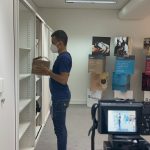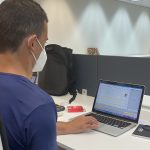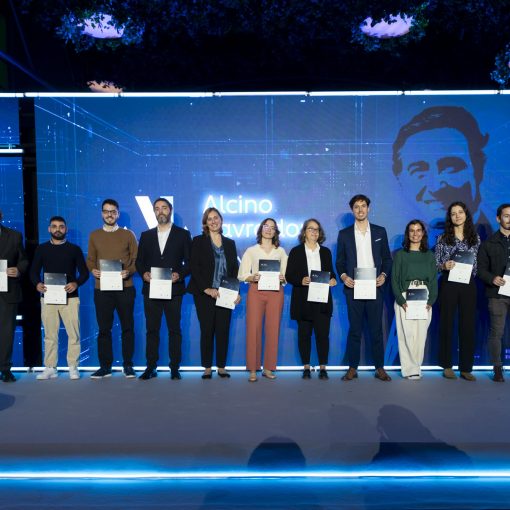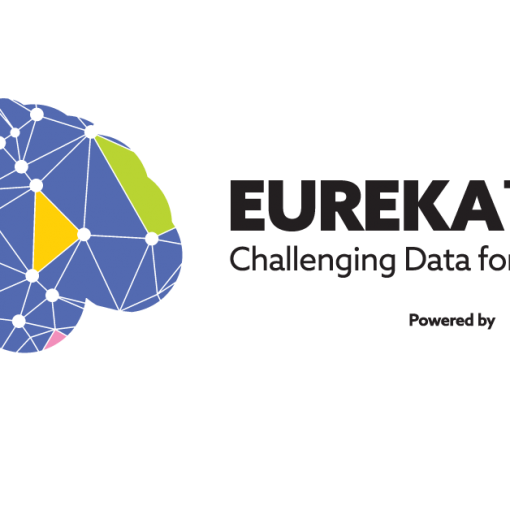OPERATOR is the name of the research project funded by about 1.9M€ by MIT Portugal through the Foundation for Science and Technology (FCT) and the National Innovation Agency (ANI), which started in 2020, the result of a partnership between several institutions and companies, including FhP-AICOS, Zenithwings, NST Apparel, Volkswagen Autoeuropa, Escola de Engenharia da Universidade do Minho (EEUM), Faculdade para a Ciência e Tecnologia da Universidade Nova de Lisboa (FCT Nova), Faculdade de Psicologia e de Ciências da Educação da Universidade do Porto (FPCEUP), , Controlconsul, and MIT’s Institute for Medical Engineering and Science (IMES).
The main goal of this project is to monitor the work method and ensure the well-being of the industry’s workers by enhancing and preventing ergonomic problems – caused by working conditions, bad posture and repetitive movements – through the placement of sensors on the workstation, on the body, and on the equipment they use, namely uniforms, vests, and gloves.
At the basis and methodology of the project are the concepts of Positive Ergonomics, Operator 4.0 (workers in the context of Industry 4.0) and the Work Quality Indices of Eurofound (European Foundation for the Improvement of Living and Working Conditions). The sensors will enable the automatic collection and visualization of data on the physical environment (vibrations, thermal comfort, brightness, noise), work intensity, working method and time, while also enabling self-reporting regarding the social environment, skills, career prospects, pressure and pain. With this it will be possible:
– Perform automatic monitoring of human movements and ubiquitous exposure, with subsequent detailed analysis of the movements and continuous monitoring of the optimal working methods. In this way deviations from the defined ideal method will be identified, allowing their evaluation in real time;
– Identify situations of stress and risk to workers’ health, namely by identifying repetitive movements that may lead to complications in the future and continuous analysis of risk exposure data in the workplace;
– To support the mental well-being of employees through an innovative solution of communication with the company, allowing them to convey their state of mind regarding three variables: social support, pressure, and pain, recognizing their value to the company;
– Support asset management (Digital Twin*) through automated processes.

The OPERATOR project will thus approach the Industry 4.0 workplace holistically, from the workers’ point of view, collecting and cross-referencing quantitative and qualitative data, building a broader picture of workers’ well-being, enabling better predictive models, thus contributing to higher productivity rates.
The prototypes being developed by Fraunhofer Portugal AICOS are in the testing phase and, according to the heads of this research center, the incorporation of sensors in tissues will “enable the analysis of workers’ movements in order to detect and prevent repetitive movements that may result in injuries in musculoskeletal systems”. This research center is also responsible for the technological development of the sensors and the digital platform, as well as for the real-time study and monitoring of workers.
The technology under development, already the subject of an international patent, is being validated in apparel manufacturing operations at NST Apparel and in automotive industry operations at Volkswagen Autoeuropa, partners in the Consortium.

Miguel Carvalho, professor of the Department of Textile Engineering and researcher at the Centre for Science and Textile Technology of the School of Engineering of UMinho, is one of the main researchers involved in this project, since its conception. The researcher mentions that the collaboration of UMinho in this project has already been extended to the Human Engineering group of the Department of Production and Systems, and focuses on the non-obtrusive incorporation of technology in wearables, so as not to interfere with their needs of movement and work handling, definition of risk factors to be controlled and definition of control parameters for work methods and occurrences in production. He also states that it is expected that: “Operator technology will provide managers of productive companies with valuable real-time information on productivity in each operation, on ergonomic aspects with an impact on the health of their workers and on the personal well-being of each worker. And he adds “The relevance of the work developed has already allowed us to prepare new projects with MIT, namely in the valorization of workers with older ages, increasingly common in several industries, namely in the Textile and Apparel Industry, Footwear and several others”.
All information about the project can be found here: http://operator-i40.com/
*Digital Twin: is a virtual representation that serves as a real-time digital counterpart of a physical object or process. Although the concept is attributed to Michael Grieves of the University of Michigan in 2002, the first practical definition of a digital twin originated at NASA in an attempt to improve the simulation of physical spacecraft models in 2010. Digital Twins are the result of continuous improvement in the creation of product design and engineering activities. Digital Twins are the result of continuous improvement in the creation of product design and engineering activities. Product engineering designs and specifications have progressed from handcrafted design to computer-aided design to model-based systems engineering.






